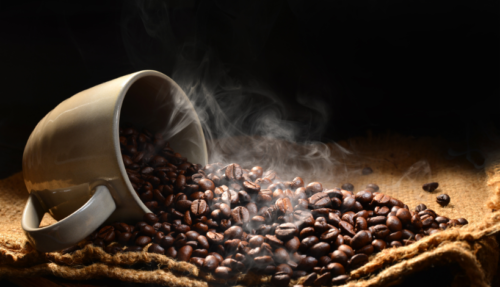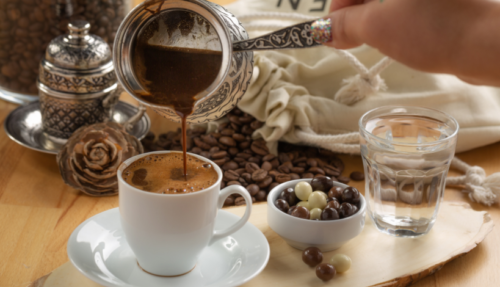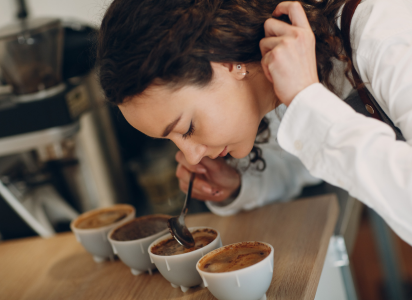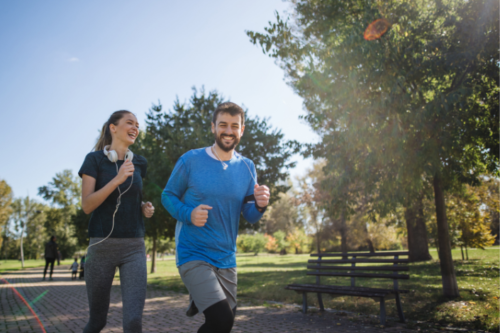In our society today, coffee is the #1 source of caffeine and some people have quite a lot of it. If you’re a coffee fan, have you ever stopped to think about just how much caffeine you’re taking in on a daily basis? If you’re asking yourself, “How much caffeine does coffee have?” we’re going to try to answer that for you.
First, the average cup of coffee has about 95mg of caffeine. That doesn’t sound like a lot, but most people don’t realize that means an actual 8oz measured cup. The average coffee drink likely has more than one cup of coffee in it, and the average coffee user takes more than one cup of coffee per day.
Coffee drinks can have anywhere from no caffeine to over 500mg of caffeine! There are so many different factors that can influence the caffeine content, which we will cover in a bit. If you drink coffee every day, it’s important to know how much caffeine you are consuming, or at least have a general idea of it.
What Type of Coffee Is It?

Your first question to understand how much caffeine is in your coffee is to consider the type of coffee. There are many different types of coffee and ways that coffee can be prepared. Standard brewed coffee is the most common and an 8oz cup of brewed coffee can contain between 70-140mg of caffeine.
Espresso is stronger and not surprisingly, as a higher caffeine content. One shot (about 30-50ml) can have as much as 63mg of caffeine. There are many different types of coffee drinks that are made with espresso, like macchiatos, cappuccinos, lattes, and Americanos. The amount of caffeine will depend on how many shots were put into your drink.
Instant coffee usually has around 30-90mg of caffeine per cup. Also, keep in mind that even decaf coffee has some caffeine, but it’s low enough amounts that it can be considered decaffeinated.
What Effects Caffeine Content?

When answering the question of how much caffeine coffee has, there is no simple answer. That’s because there are so many different things that can impact it. You have to know the different factors and how they impact the caffeine content. This will help you get a general idea of how much may be in the coffee you’re drinking.
Let’s take a look at what factors can impact caffeine content in coffee. Some things that impact caffeine content are:
- The type of coffee bean – some beans just naturally contain more caffeine than others
- The roast style – lighter roasts have more caffeine than a darker roast
- The serving size – a true “cup” is 8oz, but a serving size can be more than a cup
- How the coffee is prepared – espresso has more caffeine than regular brewed coffee
One thing that does not affect how much caffeine your coffee has is your creamer or milk. Flavorings may add sugar, but they don’t typically add more caffeine. The only exception is chocolate, which has caffeine, but usually is small amounts.
Caffeine Contents of Common Brands

If you love to get coffee from your favorite coffee shop, you might be wondering just how much caffeine is in each cup. Here are some common breakdowns to give you an idea. Remember that if you add a double shot, that’s going to be double the caffeine. Let’s take a look at caffeine contents from some of the most popular restaurants to get coffee.
First up, the very popular Starbucks. This restaurant and coffee shop is known for its specialty drinks, and they make fancy coffees and simple coffee drinks, and everything in between. How do you know how much caffeine you’re getting? Here are some general guidelines, based on size.
Starbucks:
- Short (8 oz): 180 mg
- Tall (12 oz): 260 mg
- Grande (16 oz): 330 mg
- Venti (20 oz): 415 mg
Remember that these are just estimates and it can change from store to store and also from extra shots. Next, let’s look at a Starbucks competitor, Dunkin Donuts (now known as just Dunkin).
Dunkin Donuts:
- Small (10 oz): 215 mg
- Medium (16 oz): 302 mg
- Large (20 oz): 431 mg
- Extra-large (24 oz): 517 mg
If you’re getting espresso drinks or adding extra shots, the caffeine content will be higher than these averages.
McDonald’s:
- Small (12 oz): 109 mg
- Medium (16 oz): 145 mg
- Large (21–24 oz): 180 mg
McDonald’s also has iced coffee drinks, Frappuccinos, and other coffee drinks that may have varying caffeine amounts.
Benefits of Caffeine in Coffee

There are benefits of caffeine when it is used in moderation. Coffee has a lot of antioxidants which are actually good for your health. It can also help improve concentration and short-term memory because it’s also a stimulant. In some cases, it can also help people with migraine headaches.
The important thing to know about caffeine is that it is addicting, and it also loses the benefits once it is overused. So, how do you know if you overdo it?
How Not to Overdo It

For all the Benefits of caffeine, it all stops when you overdo it. Too much caffeine can cause anxiety or increased anxiety symptoms in people who already have anxiety disorder, insomnia or sleep disruption, heat palpitations, and more.
Sometimes you can even make yourself sick from overdosing on your caffeine. You may get stomach pains or cramping and headaches, dizzy spells, or other symptoms. Here are some common symptoms and side effects of caffeine overdose:
- Increased thirst
- Dizziness
- Diarrhea
- Insomnia
- Fever
- Irritability
- Headache
- “Jitters”
And some more severe symptoms that require immediate medical attention:
- Vomiting
- Chest pains
- Trouble breathing
- Hallucinations
- Confusion
- Irregular or too fast heartbeat
- Uncontrollable muscle movements
- Convulsions or seizures
If someone is displaying these symptoms and you suspect caffeine overdose, call 911 immediately.
Remember: caffeine IS a drug. Although it is a legal drug, it is still classified as a drug, and it can be abused. When it comes to caffeine, less is more definitely applies. However, when compared to other sources of caffeine (soda, energy drinks, etc.), coffee is one of the healthiest.